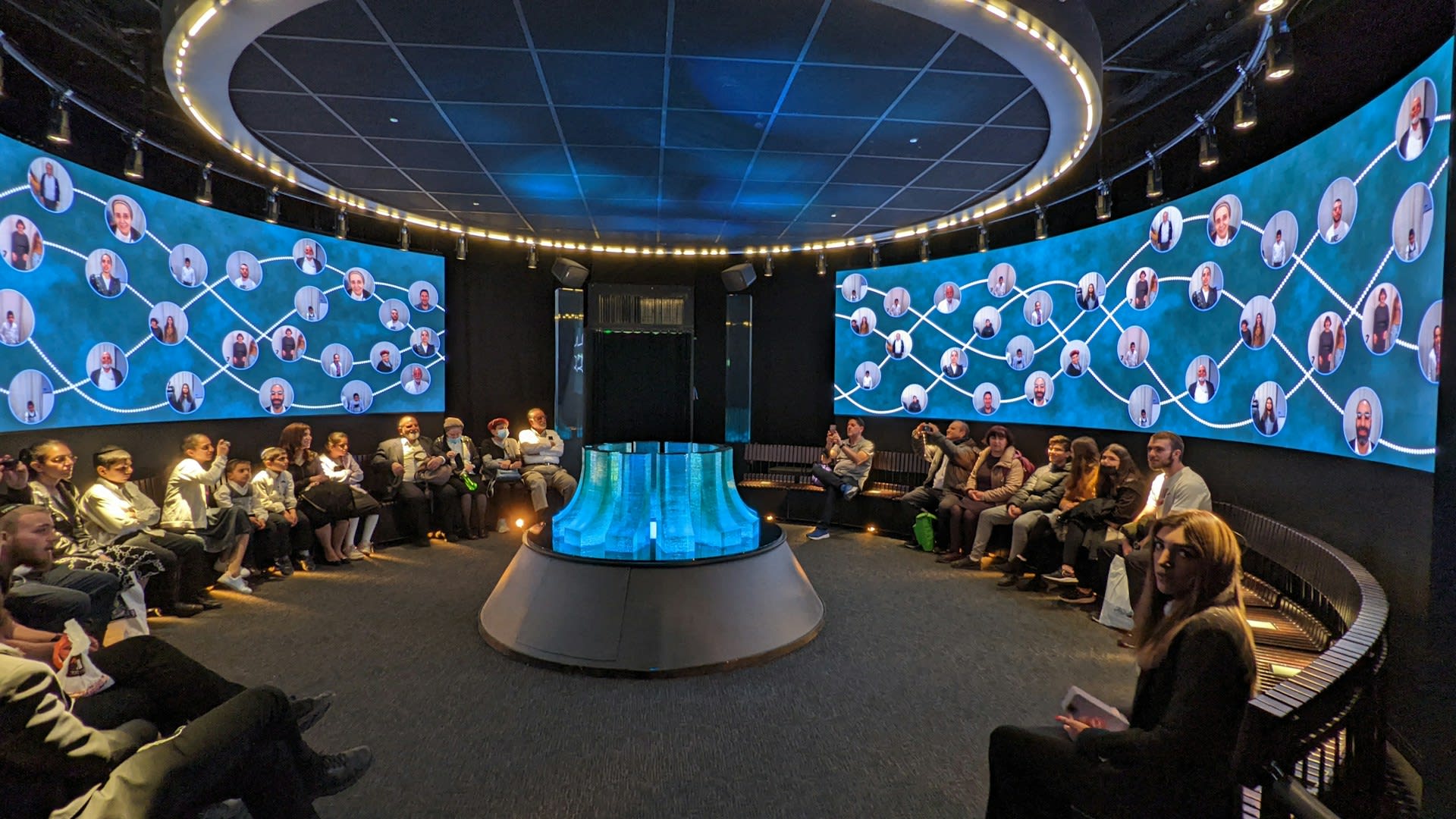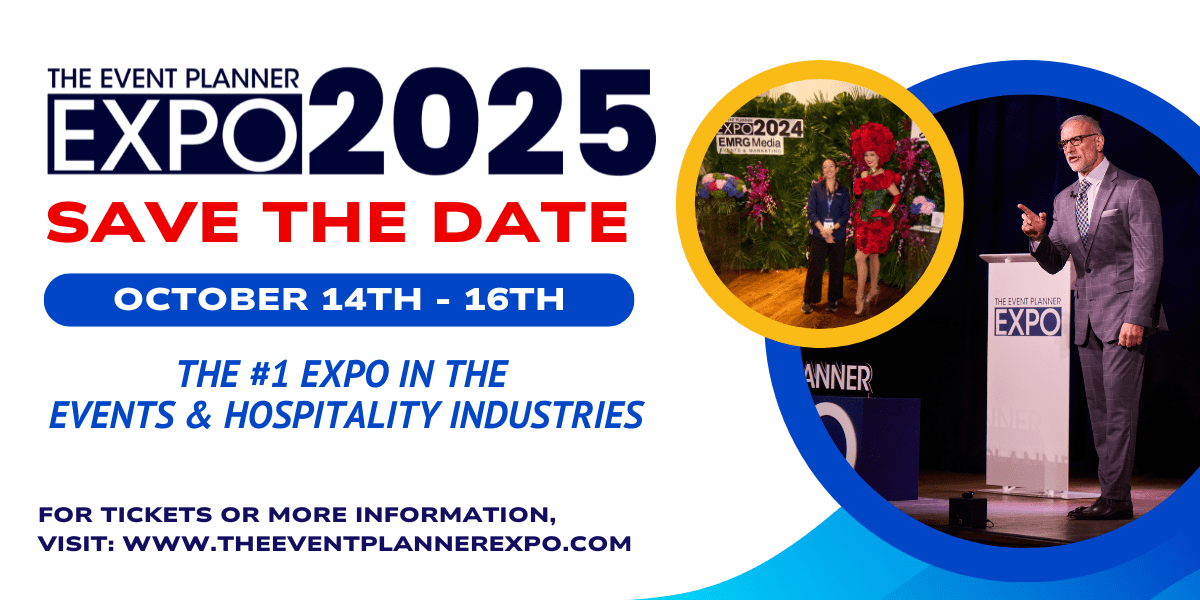Hybrid Events 2.0: Enhancing Engagement for Both In-Person and Virtual Attendees

Hybrid events have officially entered their second era.
Done right, hybrid events still give NYC event planners the best of both worlds: the energy of a live experience and the accessibility of virtual reach. But here's the catch. They must engage both audiences equally. If your virtual attendees feel like an afterthought or your in-person crowd is bored by tech glitches and awkward transitions, you're not planning a hybrid event. You're planning two mediocre events.
Hybrid Events 2.0 is all about intentional design, integrated technology, and seamless engagement. It’s about event planners putting both audiences at the center, making them feel valued, heard, and immersed.
This is your guide to getting it right.
We’ll explore best practices, creative formats, platform features, audience psychology, and the newest strategies from the planners, producers, and tech teams leading the way.
First, Let’s Define Hybrid Events 2.0
A modern hybrid event is not just a livestream of your in-person event. That’s Hybrid 1.0, and it’s what left many virtual attendees feeling like they were watching from the sidelines.
Hybrid Events 2.0 are:
-
- Integrated by design from the very beginning
- Curated to meet the expectations of both audiences
- Interactive with two-way engagement tools
- Flexible, delivering content and networking in synchronous and asynchronous ways
In 2025, successful hybrid events are planned with one unified goal: make both audiences feel equally connected, even if they’re having different experiences.
Why Hybrid Isn’t Going Anywhere
The data speaks volumes. According to the 2025 Global Events Trends Report:
-
- 78% of organizations plan to host at least one hybrid event this year
- 63% of attendees now prefer a choice between attending in-person or virtually
- 56% of sponsors say they prefer hybrid events for broader brand reach
So if you’re not planning hybrid, you’re planning to lose potential attendees, clients, and sponsors.
The Engagement Gap: What We’ve Learned So Far
One of the biggest challenges of hybrid events is the “engagement gap,” the gulf in experience between those on-site and those tuning in remotely.
Common problems include:
-
- Virtual attendees being unable to ask live questions or join breakout discussions
- Poor audio or camera quality creating distance rather than connection
- In-person audiences receiving all the attention while online participants get the scraps
- Content that wasn’t designed for digital interaction
To succeed in Hybrid 2.0, we need to eliminate the gap, not just acknowledge it.
How to Design a Hybrid Event That Actually Engages
Let’s break down the key areas that require thoughtful strategy:
1. Pre-Event: Design Two Journeys, One Goal
Start with your objectives. Then design content paths that work in both directions.
For virtual attendees:
-
- Interactive agenda builders with reminders and push notifications
- Pre-event networking lounges or meetups via chat, video, or interest-based forums
- Access to speaker bios, prep content, and preview videos
For in-person attendees:
-
- Mobile app integration with QR codes for check-ins, polls, and digital content access
- Welcome kits with tech-enabled tools (AR business cards, gamified checklists)
- Micro-moments built around engagement (live polls, group selfies, sponsor scavenger hunts)
For both:
-
- Personalized content recommendations
- User-generated questions pre-loaded for keynotes
- Early access to exclusive session replays
The goal here is to prime engagement before the event even starts.
2. Content Delivery: Stream Isn’t Enough — It Has to Interact
Streaming is passive. Engagement is active.
When planning session formats, consider:
-
- Shorter, tighter keynotes optimized for both room and screen
- Real-time Q&A that includes both in-person mics and virtual chat
- Live captioning, translation, and audio options to increase accessibility
- Camera angles that give remote guests a front-row seat, not a Zoom feed from the back
Try these hybrid content formats:
-
- Live polling where both audiences vote via mobile
- Dual emcees, one on-site, one virtual, so both audiences feel seen
- Simulive sessions (pre-recorded content played live with a real-time chat)
Pro tip: Hire a dedicated virtual host to keep online guests engaged throughout, think narrating, prompting questions, and guiding transitions.
3. Networking: Curated and Cross-Channel
This is where many hybrid events fall flat. Don’t assume networking will just “happen.”
Instead, design it.
In-person tools:
-
- Table-topic lunch zones
- 1:1 meeting booking via mobile app
- Interest-based roundtables
Virtual tools:
-
- Speed networking breakout rooms
- AI-matched video chats
- Interactive message boards with topic tagging
Cross-channel bridges:
-
- Mixed breakout rooms with Zoom rooms AND in-room screens
- Cross-platform icebreakers: emoji quizzes, photo challenges, short surveys with live results
- Shared gamification boards (points for both virtual and in-person tasks)
In 2025, planners are using smart integrations to connect both audiences. Apps like Brella, Swapcard, and RingCentral Events now allow seamless profile matching, instant video meetups, and real-time event-wide challenges that unify everyone.
Sponsor and Exhibitor Engagement: A Hybrid Opportunity Goldmine
Sponsors don’t just want visibility anymore. They want engagement and data. Hybrid events offer both — if you know how to structure your offerings.
Here’s how to get sponsors excited about hybrid:
Onsite + Online = More Touchpoints
-
- Branded lounges onsite and digital breakout rooms online
- Sponsored session content streamed on multiple channels
- Interactive sponsor booths with QR codes onsite and video demos online
Smart Lead Capture
-
- In-person badge scans linked to CRM platforms
- Digital check-ins, downloads, and chats in virtual booths
- Post-event retargeting lists segmented by interaction level
Purpose-Driven Visibility
-
- Sponsors supporting cause-based moments (charity integrations, DEI sessions)
- Social media amplification across both audiences
- Sponsored replays or follow-up emails that keep the relationship going
- Smart planners offer tiered hybrid sponsorship packages that integrate content, conversation, and cause.
Measuring Engagement: Hybrid Analytics That Actually Matter
Goodbye vanity metrics. Hybrid planners in 2025 are measuring what matters.
For Virtual:
-
- Session attendance + duration
- Clicks on sponsor content
- Chat volume, emoji reactions, poll responses
- Number of networking connections made
For In-Person:
-
- Booth scans
- App interactions
- QR-based resource downloads
- Session dwell time
Combined:
-
- Engagement heat maps
- Cross-audience conversation threads
- Shared gamification dashboards
The key: Use unified reporting to show sponsors and stakeholders how hybrid boosts value—not splits it.
Real-World Example: A Seamless Hybrid Experience in Action
At a recent NYC-based industry summit, a luxury travel brand partnered with EMRG Media to deliver a high-touch hybrid experience:
-
- A live chef demo took place in-person, while remote guests cooked along with delivered ingredient kits
- Breakout sessions were streamed live with chat moderation and in-room hybrid panels
- All attendees participated in a brand storytelling game via mobile, scanning clues across both real and virtual environments
- VIP content drops post-event gave all guests access to exclusive interviews, behind-the-scenes footage, and AR travel previews
The result?
-
- Virtual attendee satisfaction score: 92%
- In-person engagement rate: 89%
- Sponsor rebook rate: 100%
This is Hybrid Events 2.0 — built for today’s audiences, with tomorrow in mind.
What’s Next in Hybrid? 2025 + Beyond
The next generation of hybrid planning includes:
-
- Spatial audio zones for deeper virtual immersion
- AI-powered co-hosts that moderate chat, prompt questions, and suggest sessions
- Holographic presenters that bridge distance with impact
- Personalized learning paths using attendee data and real-time feedback
- Tokenized event rewards for participation across platforms (yes, event-based NFTs still exist)
But none of this tech matters without smart strategy.
Your role as planner is more important than ever. It’s not about tools. It’s about intention.
FAQs: Mastering Hybrid Event Engagement
Q: Isn’t hybrid twice the work?
It can be. But with a unified strategy and the right partners, it’s far more efficient than running two separate events. Think synergy, not duplication.
Q: What tech stack do I need to run a strong hybrid event?
Start with a hybrid-friendly platform (Cvent, Hopin, Swapcard), layered with engagement tools (Slido, Miro, Mentimeter), CRM integrations, and a mobile app for on-site guests.
Q: How can I get buy-in from leadership for more hybrid investment?
Showcase reach, data, and ROI. Hybrid extends your event’s life, your audience base, and your sponsor revenue potential.
Q: Is it better to prioritize virtual or in-person experience?
You don’t choose. You integrate. The best hybrid events build both journeys together, weaving them around a single message and emotional core.
Final Takeaway: Hybrid Is Evolving—And So Should You
If you’re still treating hybrid as a backup plan, you’re missing the opportunity.
Hybrid Events 2.0 isn’t about compromise. It’s about amplification. It’s about planning one great experience with multiple access points. It’s about crafting moments that feel intimate at scale, dynamic across formats, and unforgettable for everyone.
Ready to lead the charge?
Reserve your booth at The Event Planner Expo 2025.
It’s where forward-thinking event professionals meet the platforms, partners, and producers shaping the future of hybrid engagement.
Show up. Show off. Show what’s possible. Reserve your booth today.
